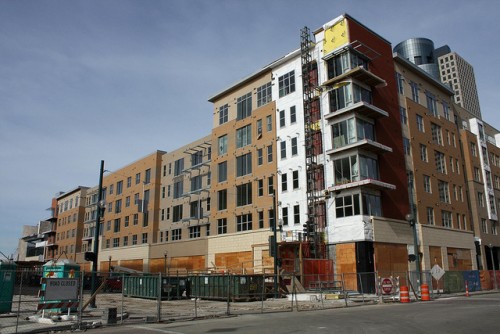The New York City Council changed its zoning laws last week, adding two ordinances that ensure real estate developers include units that are affordable to average New Yorkers. New York City Mayor Bill de Blasio organized the proposals with a team of stakeholders in a years-long effort to address rising housing costs in the city.
While New York City may be an appropriate poster child for affordable housing issues in the transforming urban landscape, the issue is endemic to cities across the U.S. According the U.S. Census Bureau, the number of Americans choosing to live in urban areas increased 12.1 percent from the 2000 to 2010 census. Residents and leaders of cities across the country are addressing the rising cost of housing.
Here are some tips to start covering housing issues in your city.
Affordability in urban communities
Many urban communities are working to address the concept of gentrification, a result of middle-class or wealthy people moving into city neighborhoods and displacing poorer residents as rents and property values increase.
The U.S. Department of Housing and Urban Development defines “affordable housing” as housing options that do not exceed 30 percent of a family’s income. The New York City ordinances aren’t tied to HUD’s affordable housing definition. Rather, they (like many cities’ affordable housing ordinances) deal with “area median income” rates that HUD releases. These zoning rules require a fixed percent of units in new developments to be “affordable” based on a percent of the area’s median income.
When tackling housing issues in your community, be sure to explore the nuances in neighborhoods with changing demographics and the specific ways cities and counties are working to keep housing affordable for residents.
Data on affordable housing
HUD collects a number of datasets that can help you understand the housing market such as median rent estimates, fair market rent data and housing affordability data. You can filter the information by area or county specific to your coverage area.
Before digging into HUD data, get familiar with what’s collected, the timeframe of collection and release date. HUD’s data guide is a good place to start.
To supplement what you find via HUD, use census data. You can do an advanced search of the Census Bureau’s American Fact Finder tool to find county- city- and block-level data on rental costs, housing prices, income and earnings, and other relevant demographics to help shape your story.
Understanding the stakeholders
A number of large cities have affordable housing ordinances on the books and others are being debated on city council floors or committees. Be sure to understand housing laws and proposals as they pertain to your city.
If you’re reporting on a specific area, talk to community or neighborhood associations, affordable housing advocates and local nonprofit chapters with positions on housing ordinances such as the AARP or women’s and family groups like the YWCA.
Developers also have skin in the game, and some ordinances offer incentives to developers to include affordable units when they develop in gentrifying neighborhoods. Others mandate these units be included in the development.
Also, not all residents support these ordinances. One study by the National Housing Institute highlighted neighbor concerns about crime and public safety, impacts to local schools and potential changes in property values. Other residents don’t believe the ordinances go far enough to combat changing demographics and wealth in inner-city neighborhoods. Be sure to include a diversity of opinions.










